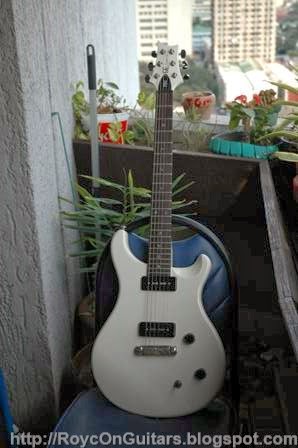Lawsuit-era guitars refer to
Gibson and
Fender Japanese replicas made in the late 70s to the early 80s. These
quality-instruments look like the real thing when viewed from a distance. Look
closer though and you will see labels like Greco, Burny, Tokai or
Fernandes.
 |
| Gibson Les Paul |
 |
| Greco Les Paul |
|
How close are they to the real thing?
These guitars have very good build
quality and workmanship, generally comparable to the US-made originals. The
difference lies in the materials used, notably the use of Asian wood, which is
readily available in Japan. The machines used to build these guitars are
usually metric-based so replacing the hardware with US-made parts may require
some drilling. Electronic parts, specifically the pickups, are generally not at
par with the US-made pickups. Change them to US-made pickups though, and you
have a killer guitar that may match an original Gibson or Fender. However, not
all guitars from the same manufacturer have the same build quality so checking
the guitar thoroughly before buying is necessary.
Does the aged wood of lawsuit-era guitars affect tone?
It is believed that naturally aged
wood sounds better than fresher wood. There are even suggestions that wood
vibrations caused by using the guitar helps improve the tone of old guitars. However,
does aged wood really affect the guitar tone? To answer this, we have to
understand a few things.
When a wire is passed over a
magnetic field, electric signals are produced. This is how electric generators
work. This is also how electric guitar pickups work. These pickups have magnets
(one per string) that are placed close to the strings. Similarly, electric
guitar strings have strong magnetic properties. When strings vibrate, they cut
through the magnetic field and electric signals are produced in the pickup
wires, which are then passed to the amplifier to make the sound louder. Electric
guitar pickups are not designed to produce electric signals from wood
vibration.
Pickups play a major role in the
electric guitar tone. However, I believe that the top still contributes to the
overall tone. Raise your iphone and tap it. Next, put your iphone on top of a
table and tap it. Then, put it on top of the sofa and tap it. They sound
differently because the material where the iphone is placed affects the tone. I
believe that the same is true with guitar bridges and frets—the tone produced
is affected by the materials beneath them, though not in the same scale as the
pickup. This is just my personal opinion. Perhaps I will try to do some experiments
when I have the time and resources.
Guitars from the late 80s and early 90s
Later guitars are not exact
replicas of Gibsons and Fenders, mainly due to changes in headstock shapes and
truss rod covers to avoid lawsuits. The build qualities are still there, but
they are not as valuable since people buy replicas because they look like the
real thing. In addition, some guitars bearing the same brand are made in Korea
and are not from Japan.
Guitar dating and pricing
Most of these guitars have the
year of manufacture indicated in the first few digits of the serial number, if
available. If the first digit is zero, the guitar is 1980 if it looks like a replica,
but 1990 if the truss rod cover or headstock is different from the US original.
SRP for these guitars are usually
indicated in the model number. A Greco EG-700 model, for example, means that
the SRP was 70,000 yen.
Comparison
Here is a table listing popular Japanese brand counterparts of the US originals:
Gibson – Greco, Burny, Tokai,
Navigator, Aria Pro, Bacchus, Yamaha
Fender – Greco, Fernandes, Tokai, Yamaha
There are other brands supposedly
imported from Japan, but one should be cautious since not all guitars sold in
Japan are made in Japan.
Orville, Epiphone and Fender Japan
These are not lawsuit guitars
since they are licensed from Gibson and Fender. I will discuss them in a separate
article.
/royc
























































